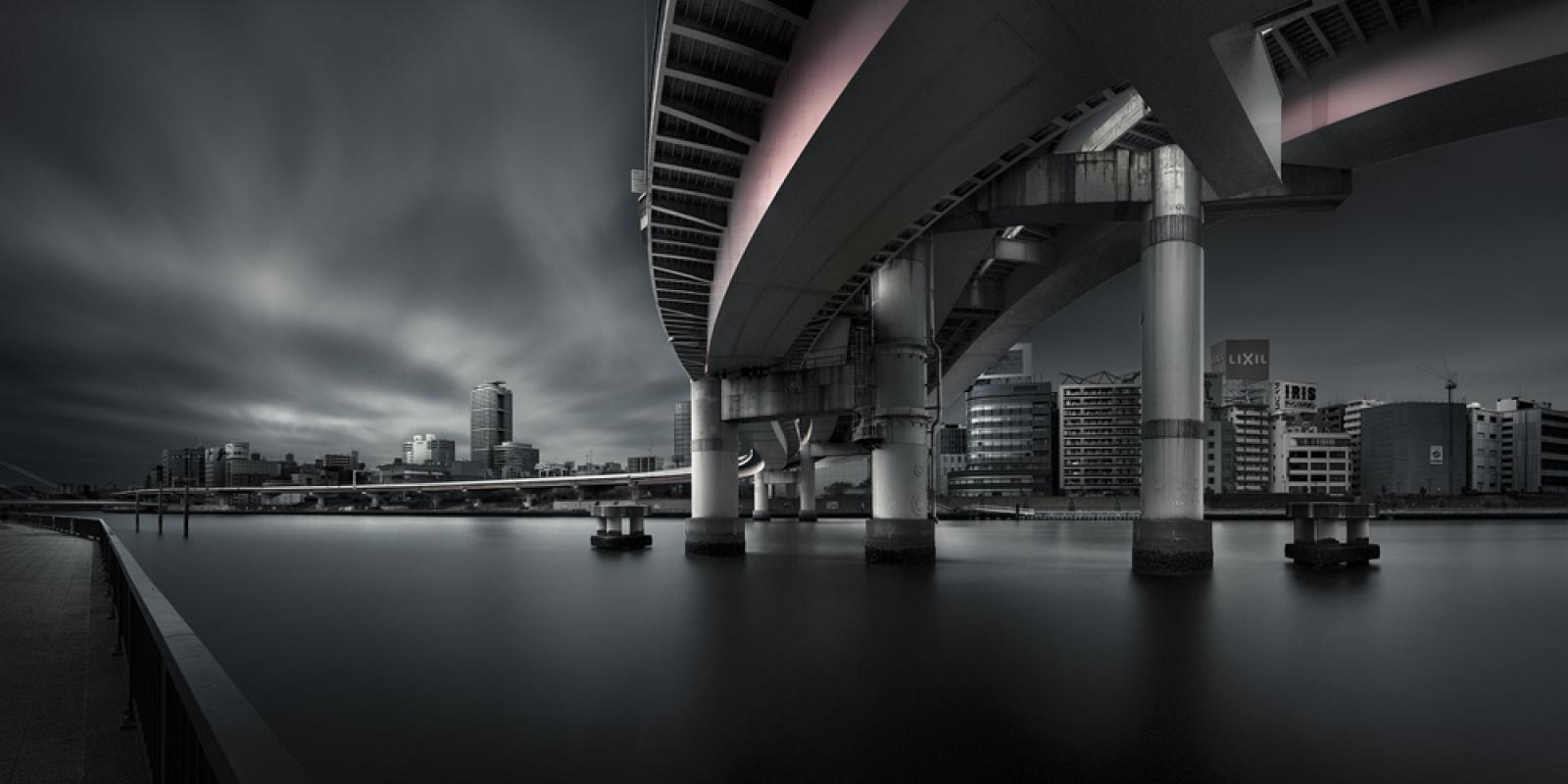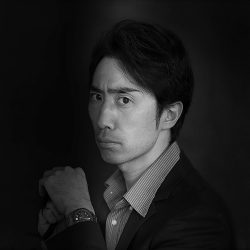Yoshihiko Wada
Interview with Yoshihiko Wada
Discovery of the Year 2017, category Architecture “The City Juncture ”
Since your TIFA 2017 Architecture entry “The City of Juncture” does not include people, do you believe that a human element should be excluded from Architecture Photography? Why or why not?
It depends. Generally, you should avoid people in your frame because human element may be so strong that it easily distracts from the main subject. In most cases, there are pedestrians or tourists so you can solve the problem with long exposures. However, the human element can put a unique drama in your picture if executed carefully. Sometimes I use it in my works, so I don’t think the human element should be excluded totally.
What’s your process when shooting architecture? Do you research the structure prior to shooting it?
I do research, especially when and where the light comes from. Great light makes a great photo. The same can be said in every genre of photography. I also google for pictures of the location. This is not for copying, but avoiding a similar picture which was already taken. It’s difficult to shoot popular architectures for you are forced to have a similar composition. But try put “your vision” in the picture even though it’s subtle. I hate a blind copy. It means you are abandoning your creativity. Any homework would never take the place of an “inspiration” on the field. Internet or Google map is useful but you should not rely on them too much.
What do you consider essential skills and equipment when photographing architecture?
First of all, you should have an interest in architecture or cityscapes. You can never be refreshed with a walk around messy city areas like in a hike with the green nature. In those areas, the atmosphere is usually bad and so is the smell. I often wear a mask to avoid the exhaust gas while I am in the middle of the city.
Since often you have to stay at a same location, like under a bridge, for hours and hours, so “perseverance” is a crucial factor; the more perseverance you have, better pictures you’ll get. When it comes to equipment, better have a PC lens. A 24 mm is my recommendation. 90% of my works were captured through a Nikon’s pc-e 24mm. Don’t forget to use the best filters for long exposures. Never use a cheap one.
Let us know your workflow after shooting. How big a role does post-processing play in your photographs?
It’s difficult to say “how much”, but I can’t imagine creating my work without any post-processing.
Usually, I take a month or two in finishing my piece. Maybe around 50 hours or so for Photoshop tasks, including adding layers, making masks, dodge and burn, etc. The amount of time it takes depends on the scale of work. Sometimes it takes more than a year for me to finish after shooting. I don’t want to compromise.
It depends on the photographer and his or her style for post-processing, but I think you should take a lot of time to make convincing images. I’m not talking about “Photoshop”, but instead about the actual time, the moments away from your PC. Time makes you objective and gives you fresh ideas. I often get an interesting idea for my next project while I commute, read books or watch movies. When I get tired with a current project, I do another project or wash the dishes. All the activities in your life are connected. I never publish my work the night after shooting. There’s nothing finer than aged wine, is there?
It was almost two years ago when I took the first picture of “The city of Juncture.” It was supposed to be a single work, but to make a much more convincing image, I thought it should be a series. For shooting all the pictures and creating the convincing post-processing, it took 2 years to publish, but it was worthwhile.
Take us back to the time you discovered your passion for photography.
I started photography almost 5 years ago. I was just craving for fresh air, I wanted to start something new. Since I’ve been involved with sound for a long time, I’ve graduated from a music college and worked as both a composer and sound designer (my current profession), seeing the world through the camera was pretty exciting. I’ve become totally hooked on this new way of expressing myself beside sounds.
What kind of photography do you identify with besides Architecture Photography?
My first obsession was shooting waterfalls. I went to so many waterfalls every weekend. The sound of the water stream relieved my stress. I still shoot them when I want to get away from city noise.
Can you share with us your overall experience in photography?
Acceptance and persistence are what I mostly learned.
I usually spend a few hours at the same location. The great result makes me happy, but often, even with thorough research and great effort, the result ends up mediocre. The result hugely depends on the weather and light on that day, which I can’t control. Even though the end result was different from what you expected, you have to accept it. When you are satisfied with it, that’s okay, but if you were uncomfortable with it, just give it a try next time. To have a good picture, you just have to keep shooting. After all, the sun rises tomorrow and life goes on. That is also applicable in photography, isn’t it?
Are there any photographers that inspire you?
I was inspired and I learned a lot from Joel Tjintjelar and Julia Anna Gospodarou.
Their high-contrast architectural photography is modern and stylish. Their B&W creations were so different from others and from what I’ d seen before. I’m sure if I did not see their photos, I would not do architectural photography so deeply like today. Unfortunately, I haven’t been able to attend their workshops. I just read their book and observe their works carefully.
What is your dream project? Why?
To take a few months vacation and shoot various types of architecture in Europe. Sounds like a real dream for me!
What is your advice to emerging photographers?
Don’t rush. Don’t compromise.
Don’t care about “Likes”. Make your own work.
Copying is not a bad thing in the beginning. You can learn a lot from others.
But please put your own essence or “spice” in it.
Even though it was very subtle, keeping the little differences makes your work unique in the end.

